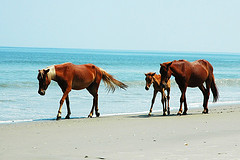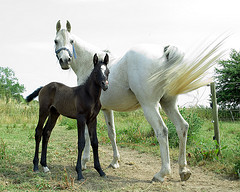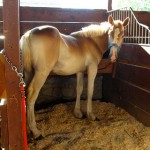.
Last time I focused on the front of the horse—ears, mouth, face. Today I’m going to talk about the other end. The rear is the other important area to be aware of because it’s the most dangerous. The two important indicators are the tail and the legs and feet.
A tail is like a flag, signaling safety or danger. Hanging softly while standing still or waving slightly  when moving usually shows the horse is relaxed and comfortable. A tail stuck up straight, combined with a high head, indicates an alert or excited animal. You often see high tails when horses are playing and even ones curled over the backs of exuberant Arabians. A horse will sometimes clamp its tail, just like a dog does, when it is frightened and trying to protect its vulnerable areas. Or it could be clamping to protect against cold water when being bathed. J
when moving usually shows the horse is relaxed and comfortable. A tail stuck up straight, combined with a high head, indicates an alert or excited animal. You often see high tails when horses are playing and even ones curled over the backs of exuberant Arabians. A horse will sometimes clamp its tail, just like a dog does, when it is frightened and trying to protect its vulnerable areas. Or it could be clamping to protect against cold water when being bathed. J
In the summer when there are flies about, horses swish their tales to chase away the pests. Usually, this is a fairly lazy motion, but sometimes it can have some force as anyone who has been hit in the face can attest. However this is quite different from a rapidly slapping tail that indicates the horse is angry or upset about something. Be very careful when you see this. A kick may follow if you aren’t careful.
A kick can be quite powerful and damaging. You don’t want to be on the receiving end of a frightened or angry blow. On the other hand, often kicks are just warnings and have no power behind them and/or are not intended to connect. Horses often cock their legs as a threat and may 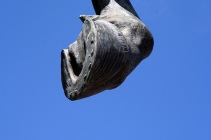 even kick out but not actually hurt another horse. Most of the time they kick out of fear and to defend themselves.
even kick out but not actually hurt another horse. Most of the time they kick out of fear and to defend themselves.
This is one reason you don’t want to startle a horse. You always should talk to horse if you come up behind them to let them know you’re there. This goes doubly for touching them unexpectedly. A defensive blow that another horse might barely notice can be much more damaging to a human. One of my horses, after spending most of the day being bathed, shaved, having her mane pulled (which she hated) and braided, and getting thoroughly primped for a show, had simply had enough. Her patience had run out. When my trainer bent down to adjust a rear leg wrap, the horse lightly tapped her on the leg, not trying to hurt, simply telling her to go away. Unfortunately, she hit the trainer’s shin and that did hurt like blazes.
There’s one other thing I’d like to mention about protecting yourself from being kicked. It’s actually much safer to be close to the horse than back a ways. If you’re next to the horse, a kick will be more like a push. If you’re father away, you can get the full force of the blow. You’ll notice most horsemen keep their hands on a horse. This lets the animal know where they are and person can immediately feel any changes in the horse’s body, such as tensing to kick or move.
 I mentioned before that a horse might cock its leg in threat. They also cock their legs when they’re relaxed and comfortable. You can tell the difference by reading the whole body language. Is the body braced and tensed? Be careful. Or is the body slack and loose? He’s probably dozing. If he’s dancing around, he’s excited and maybe fearful. So what it comes down to is you need to be aware of your horse and learn to read his body language. Horses have different personalities and you need to learn to interpret his particular dialect.
I mentioned before that a horse might cock its leg in threat. They also cock their legs when they’re relaxed and comfortable. You can tell the difference by reading the whole body language. Is the body braced and tensed? Be careful. Or is the body slack and loose? He’s probably dozing. If he’s dancing around, he’s excited and maybe fearful. So what it comes down to is you need to be aware of your horse and learn to read his body language. Horses have different personalities and you need to learn to interpret his particular dialect.
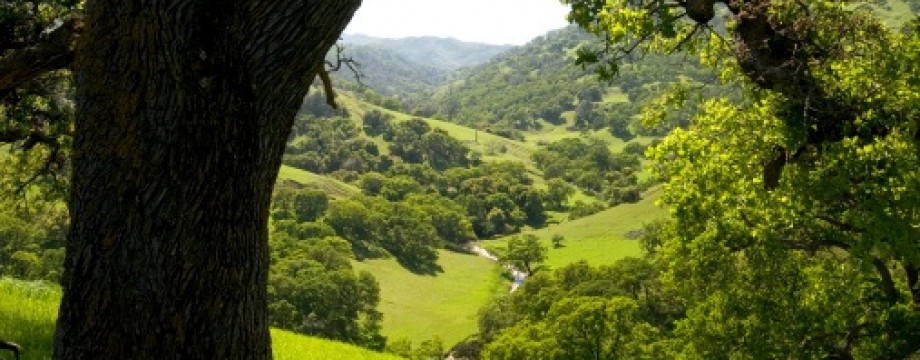
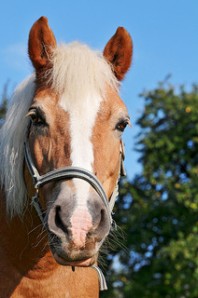
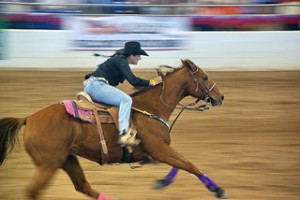 icorn piñata hanging from a tree near the pasture and high-tailed it back to the barn. When a crowd of kids gathered around it and began playing with it, she couldn’t contain her curiosity and crept back up to the fence. Each time someone whacked at the toy and sent it swinging, she’d run away, then stop and turn to watch. In a few minutes, she was back at the fence again. I think she was quite disappointed when it finally broke.
icorn piñata hanging from a tree near the pasture and high-tailed it back to the barn. When a crowd of kids gathered around it and began playing with it, she couldn’t contain her curiosity and crept back up to the fence. Each time someone whacked at the toy and sent it swinging, she’d run away, then stop and turn to watch. In a few minutes, she was back at the fence again. I think she was quite disappointed when it finally broke.